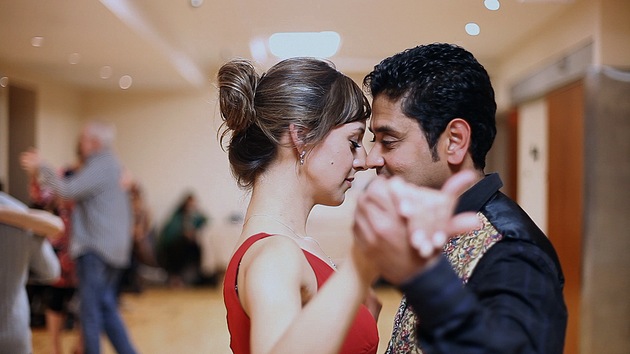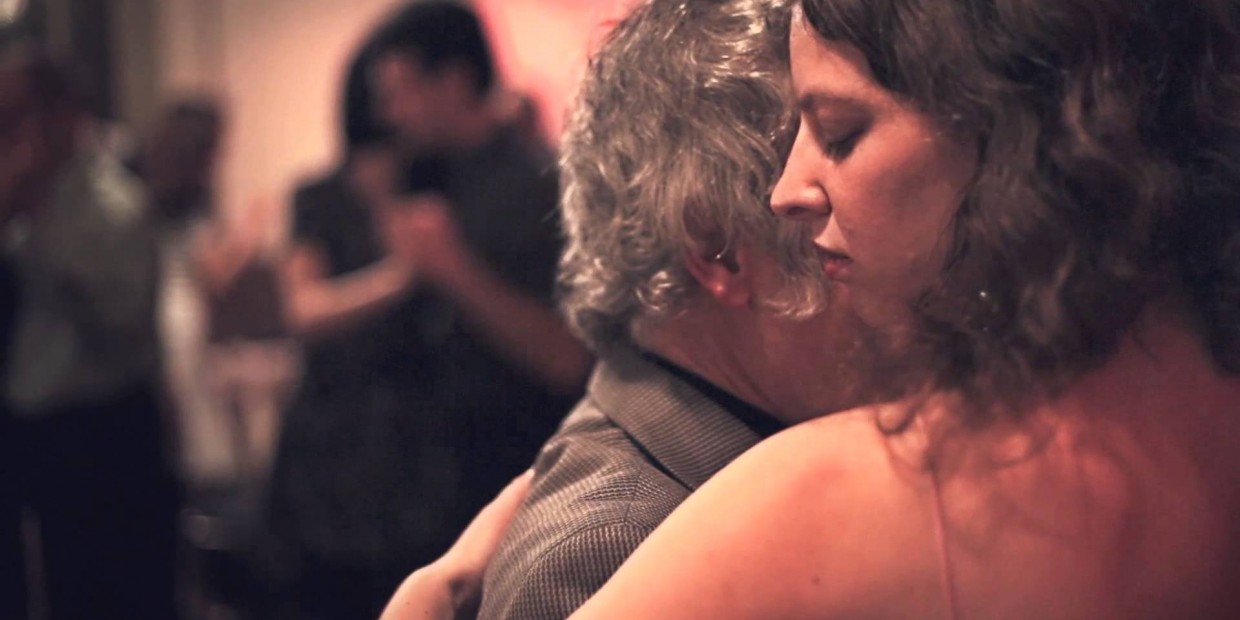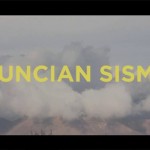By David Pountain
Directed by Miguel Libedinsky
Watch Hearts of Tango on FilmDoo
“When you’re dancing tango, you are managing five relationships at the same time,” observes one of the many dance enthusiasts and theorists interviewed in Hearts of Tango, the celebratory new documentary from Miguel Libedinsky. “You have the relationship with the ground, the relationship with your partner, the relationship with your music and with everybody else on the dancefloor,” the interviewee continues, “And the most important relationship…is the relationship with yourself – and, when you find that, it’s pure heaven.” The divine interconnectivity suggested by these words runs through all 64 minutes of Libedinsky’s film in both form and content. It’s the sturdy backbone of a film that gets more thematic mileage than you might expect from the current tango trends in Toronto. The dance is presented as an expressive meeting point of personality, tragedy and triumph – a therapeutic blending of lives, and all the culture, history and individual experiences that these lives bring.
Artistically, there’s no obvious reason why Hearts of Tango needed to pick Toronto as its setting, especially given the worldwide phenomenon that is its subject. But, in the film’s sporadic exterior shots, the city becomes its own overarching character, enhancing the continuity between the various anecdotes, musings and practices of its occupying tango scenesters. One interludial mid-film montage is particularly exuberant in tying tango to the vibrant life of Toronto in general. Further aided by Carlos Libedinsky’s acute, tonally malleable soundtrack, the film reflects the instinctive, improvisatory nature of the dance in its fluid, spontaneous transitions between people and issues.
Tango acts as a prism through which lives and ideas are studied. One happy relationship is presented almost as an expansion of the tango classes through which they met. A woman in a wheelchair uses tango as a means to challenge perceptions of disabled people as an non-social group disassociated from tenderness and grace. Tango is connected to other arts, such as music and photography, and its technical aspects are illustrated with several tools, from an electrical appliance that reads weight concentration to a sculptural diagram of the correct posture fashioned from a wire hanger. But while tango is demonstrated to hold a spectrum of meanings depending on who you ask, there are, nonetheless, underlying shared experiences of the dance that link people intimately.

At the same time, the film is sure to highlight the divisions that characterise the field, both externally and internally. Miguel Libedinsky makes a distinction between everyday social tango and the more exhibitionist forms of stage tango depicted in pop culture, with the latter’s intensely romantic connotations further alienating outsiders who are already made uncomfortable by the dance’s physical intimacy.
Meanwhile, the dancers themselves are split between the traditionalists and those looking to incorporate modern and experimental elements into the music and performances. There are those who observe how tango was started by the oppressed lower class but was picked up by the ruling class who imposed rules and regulations on the practice, and connect this to a current friction between the spontaneous and disciplined faces of the dance. There are also those who lament that tango has now become exoticised and colonialised by North American and European cultures, while others warn against keeping Tango boxed in by its Argentinian roots. Again, this discord is tied in with the interconnected nature of the dance itself, finding a certain harmony in these conflicting elements.
A final connective quality that Hearts of Tango attributes to its subject is its relation with history. The film may well have benefitted from lengthening its very concise running time to explore this particular avenue further, potentially granting the picture a rich new dimension of emotional heft and social relevance. Then again, tying tango too much to one historical narrative may have also hindered the joyous subjectivity that Libedinsky gets across. Quoting renowned Argentine dancer Carlos Gavito, the film offers the notion that “Tango was an immigrant music, so it does not have a nationality.” Hearts of Tango justifies this statement with its inviting mix of enlivening discourse and uplifting universality.
Watch Hearts of Tango on FilmDoo. (UK & Ireland only)









Hello David, this is Miguel, director of the film Hearts of Tango. Going through reviews of the documentary, I’ve found that maybe something in the narrative (especially at the beginning) may have lead to the question contained in your review: “Artistically, there’s no obvious reason why Hearts of Tango needed to pick Toronto as its setting…” I just wanted to clarify that yes, there is a reason. I’ve left Buenos Aires and immigrated to the city of Toronto in 2001. I’ve found in Toronto something that belongs to my city of origin: Tango in the most unexpected place, due to its geographic and cultural distance. So the idea was to explore the “Tangoactivity” in my new place in the world, as a personal way of reconnection; if you want, also as a deep healing process to treat the injuries you certainly get when uprooted from your place of origin.
Hope this sheds some light on the reasons of the geographical setting of the film.
I also take the opportunity to thank you once again for your review and your rich reflections about this one “hell of a ride” that was writing, directing, and producing my first professional feature movie.
With kind regards,
Miguel
Thanks for the insights, Miguel, and for the delightful film too. All the best with your next project.